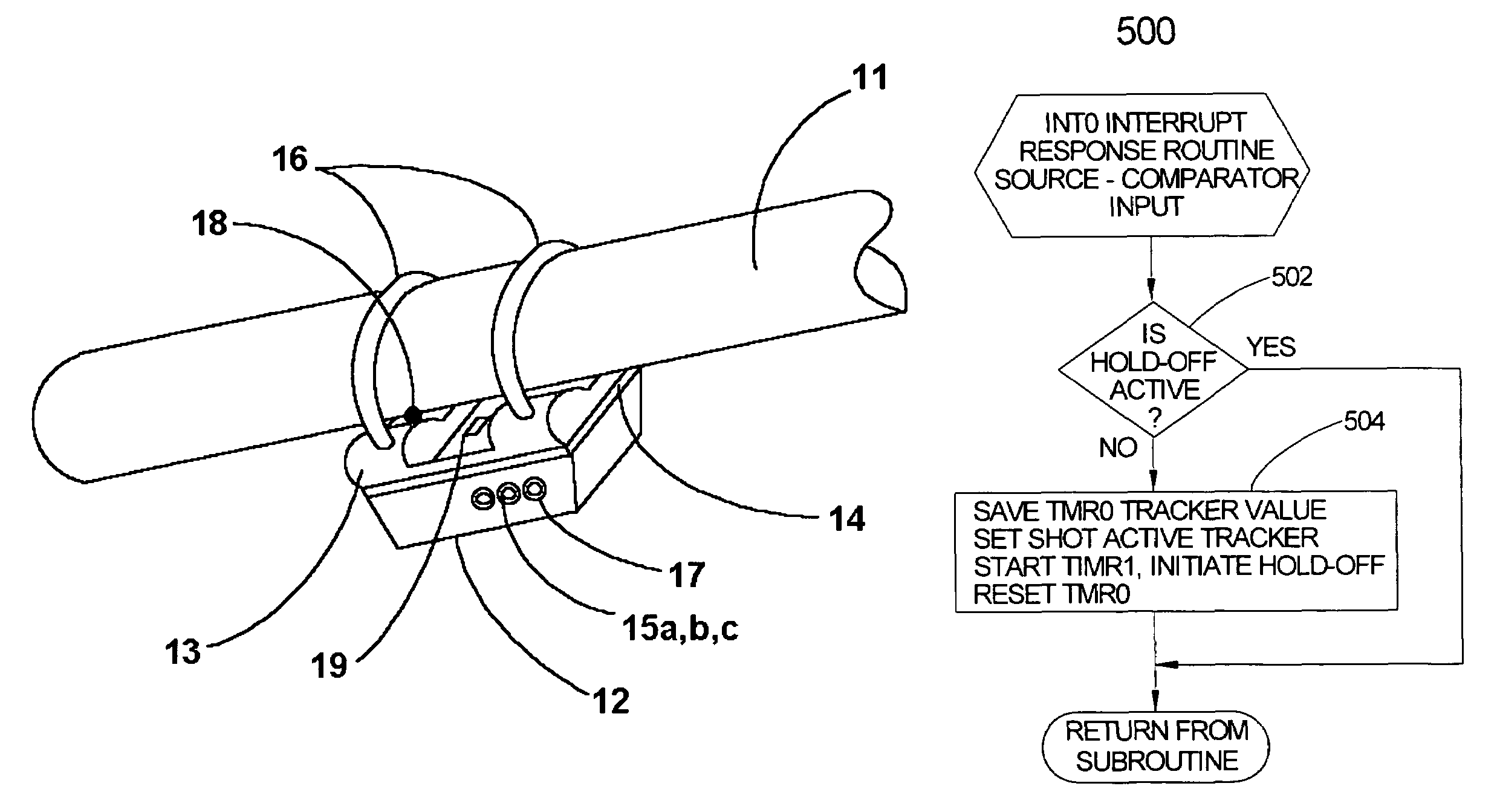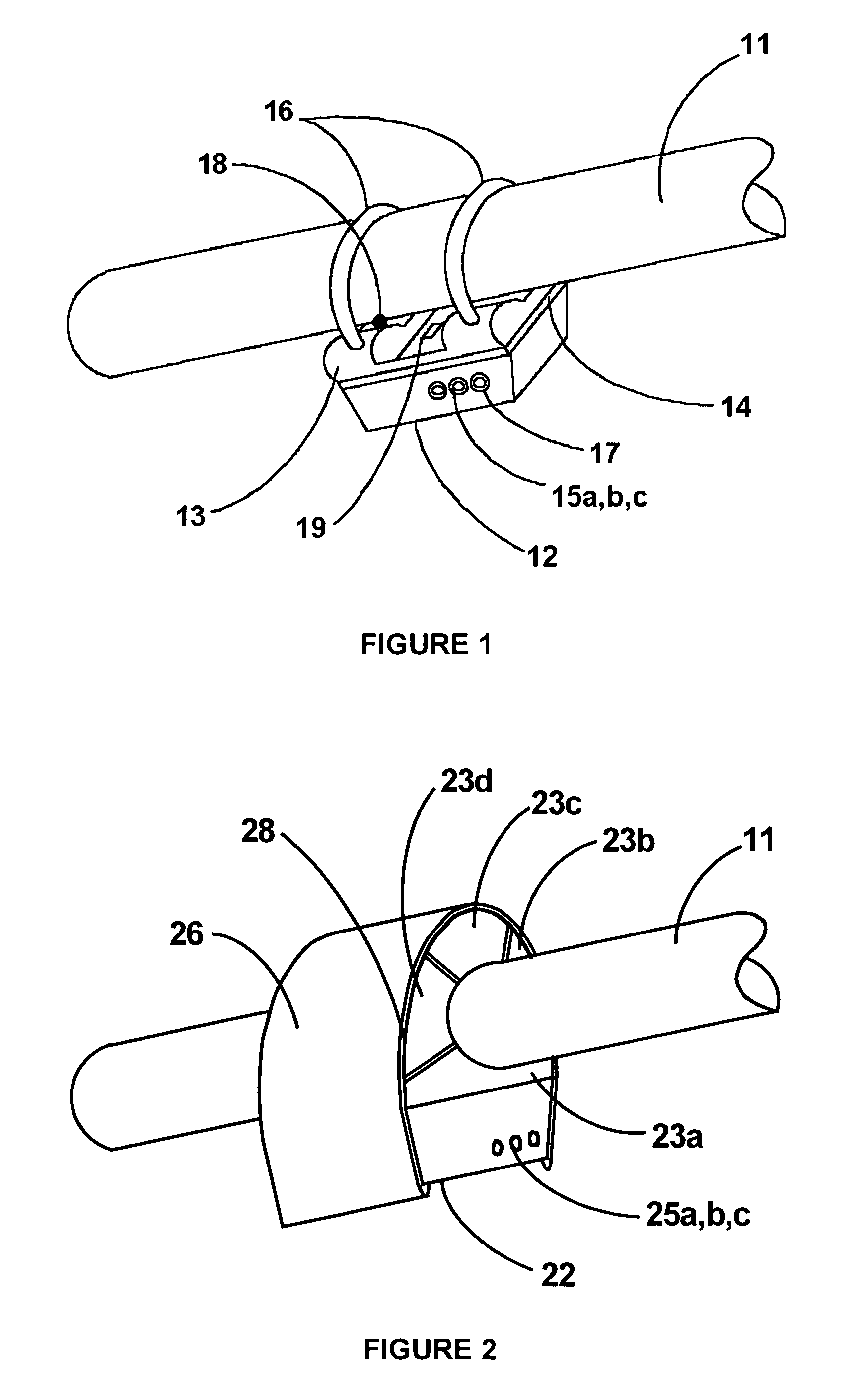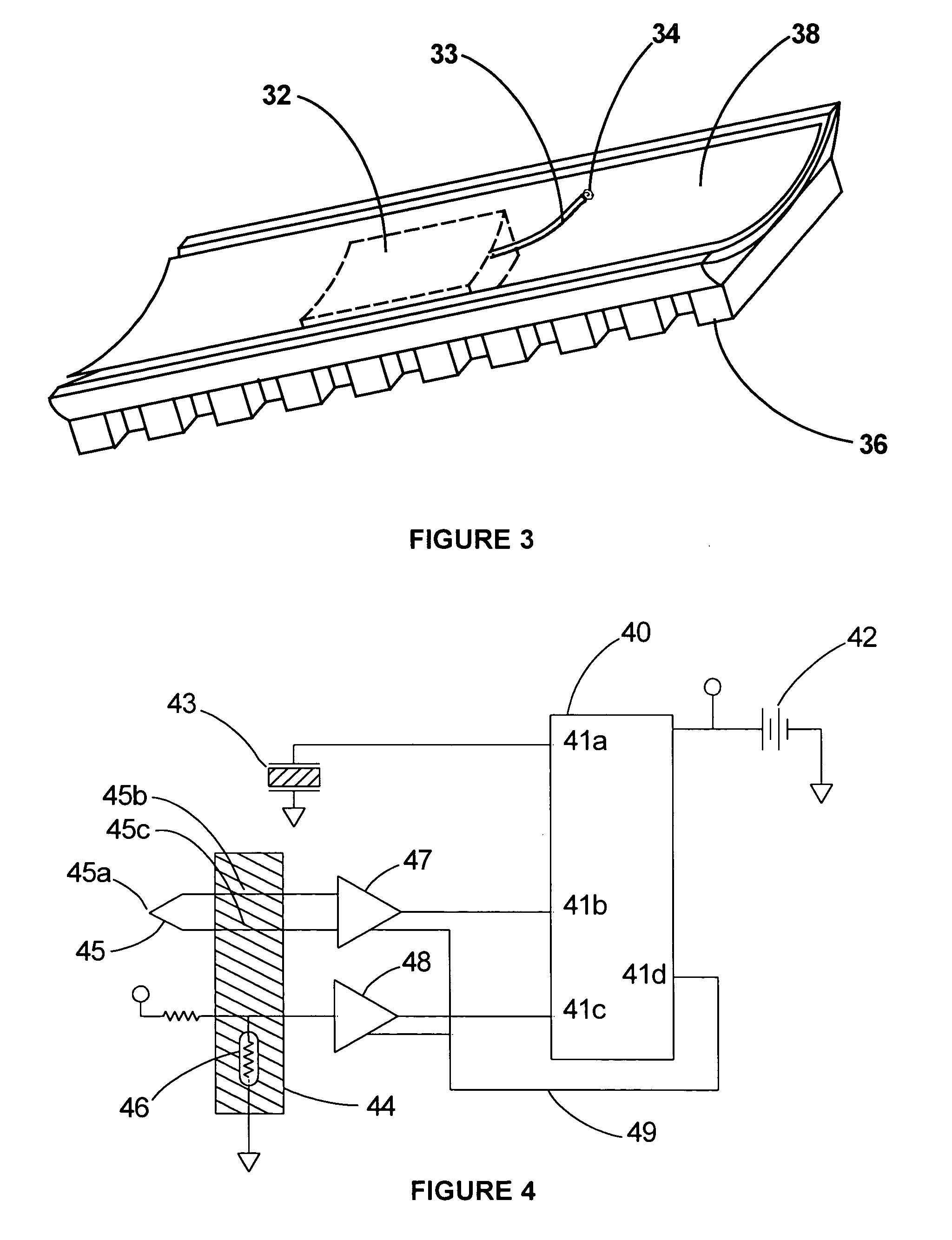Device for collecting statistical data for maintenance of small-arms
a small-arms and statistical data technology, applied in the direction of instruments, force/torque/work measurement, explosion force measurement, etc., can solve the problems of bursting of the barrel, wear and tear no information can be provided that can be related to the wear of the barrel or internal, etc., to achieve the effect of reducing the frequency of radio frequency, simple and convenient us
- Summary
- Abstract
- Description
- Claims
- Application Information
AI Technical Summary
Benefits of technology
Problems solved by technology
Method used
Image
Examples
case 12
[0048]Case 12 may be attached to insulator 13 by any means that does not form an efficient thermal conduction path. A high-temperature silicone adhesive 14 is preferred as this class of material can withstand temperatures of over 400° C., has excellent adhesion to most materials and is resistant to attack by most common solvents. Useful alternate adhesives include cyano-acrylates and high-temperature epoxies. Mechanical fasteners with low thermal conductivity, for example ceramic or stainless steel machine screws, can also be used.
[0049]A thermocouple can be used as the temperature sensor. This may be embedded within the contact surface of insulator 13 with the bead 18 positioned so that it will contact the barrel 11. Alternatively a spring or compliant material can be used to maintain the thermocouple bead in contact with the barrel. If an infrared device 19 is used it is sufficient to provide a path for thermal radiation to reach the detector.
[0050]The shot counter case 12 is prov...
first embodiment
[0054]As in the first embodiment contacts 25a–c are provided for communication. A display may optionally be provided.
[0055]The shot counter may be incorporated within a weapon or adapted to be mounted on an attachment rail as illustrated in FIG. 3. The electronics of the shot counter are enclosed within the case 32 that is attached to mounting rail 36, underneath the heat shield 38, in any of several widely used manners. A contact (not visible) within the mounting rail 36 connects temperature sensor 34 to the electronics within case 32. If the temperature sensor 34 is a thermocouple a spring 33 is used to hold it against the barrel (not shown). Contacts and a display may be provided.
[0056]Many other mounting methods may be envisaged for the shot counter. It may be embedded within a hand grip or stock, clipped or strapped onto the weapon or inserted within the space between the barrel heat-shield and the hand-grip or rail interface system.
[0057]The operation of the shot counter will ...
PUM
| Property | Measurement | Unit |
|---|---|---|
| temperatures | aaaaa | aaaaa |
| temperatures | aaaaa | aaaaa |
| temperatures | aaaaa | aaaaa |
Abstract
Description
Claims
Application Information
 Login to View More
Login to View More - R&D
- Intellectual Property
- Life Sciences
- Materials
- Tech Scout
- Unparalleled Data Quality
- Higher Quality Content
- 60% Fewer Hallucinations
Browse by: Latest US Patents, China's latest patents, Technical Efficacy Thesaurus, Application Domain, Technology Topic, Popular Technical Reports.
© 2025 PatSnap. All rights reserved.Legal|Privacy policy|Modern Slavery Act Transparency Statement|Sitemap|About US| Contact US: help@patsnap.com



